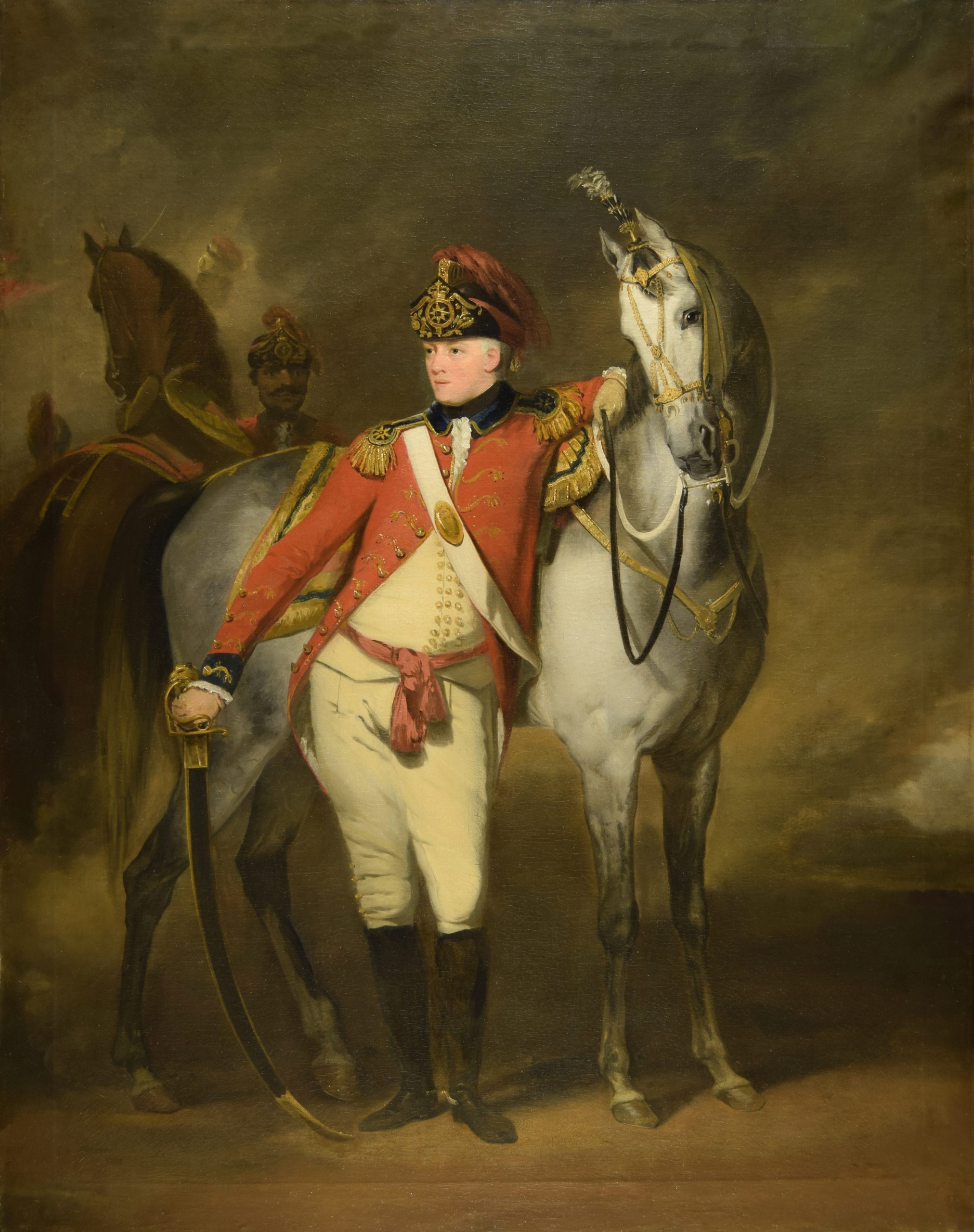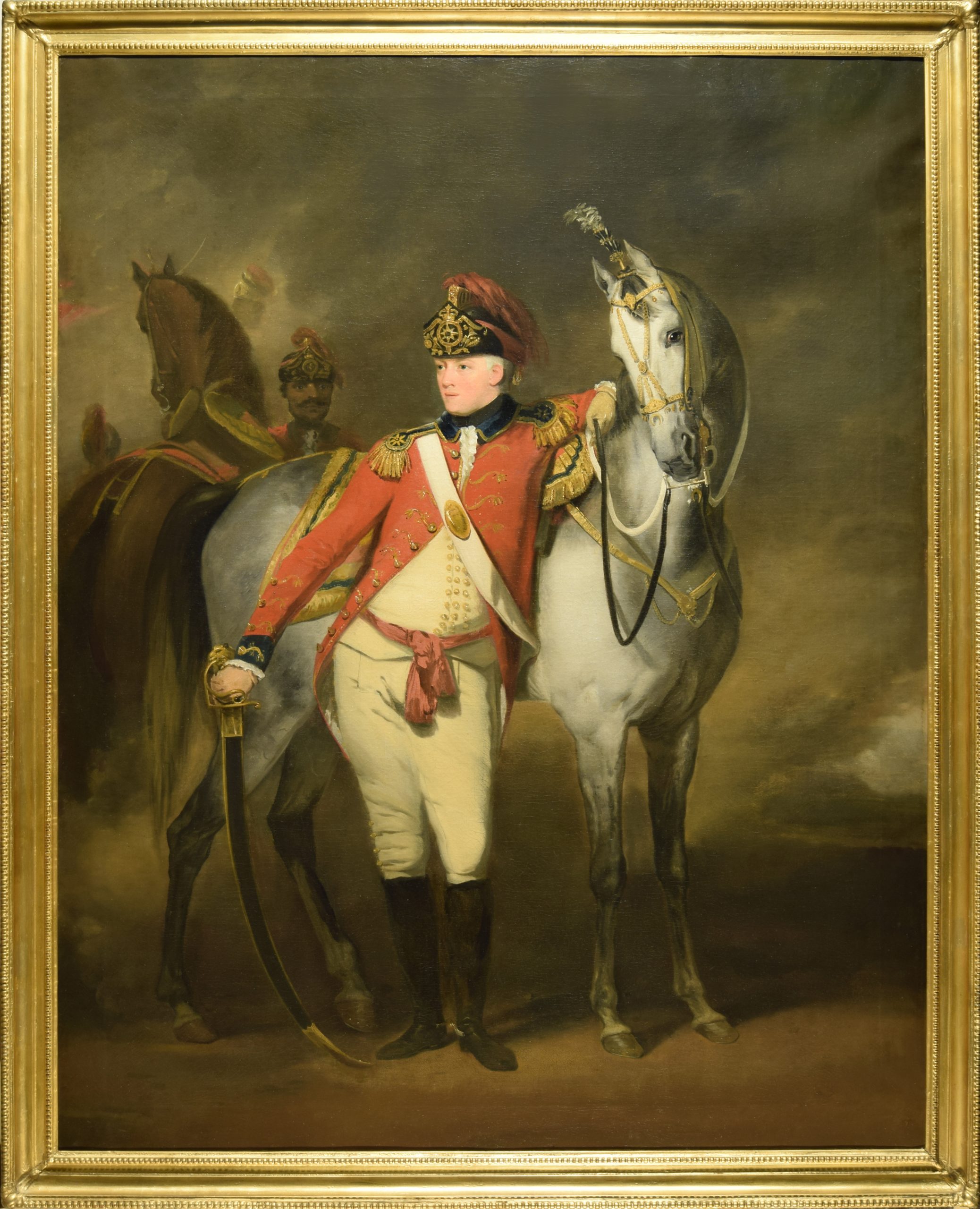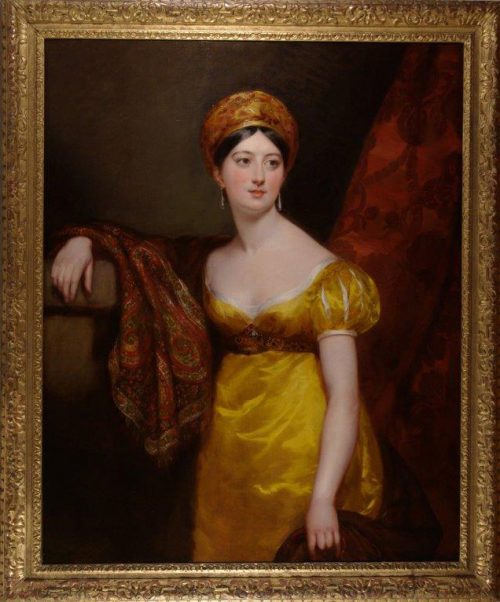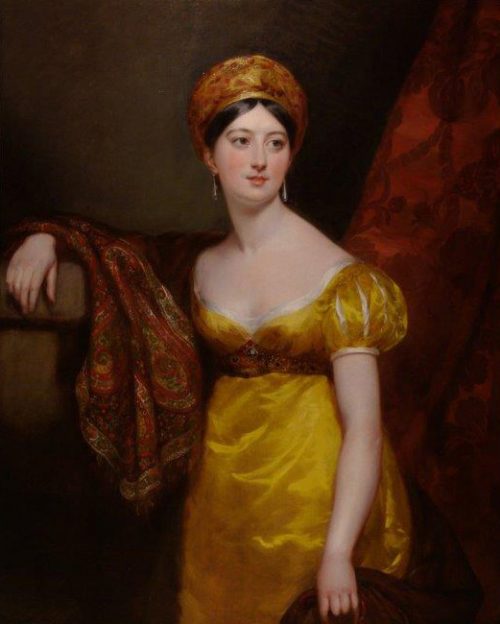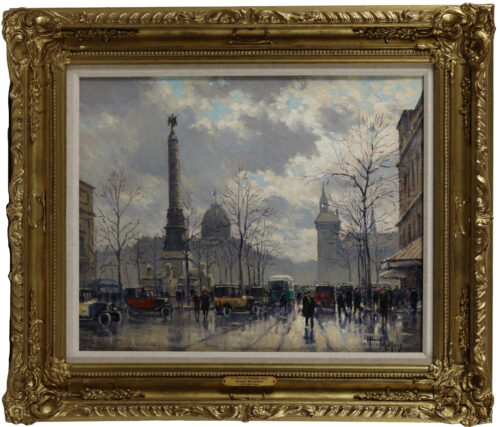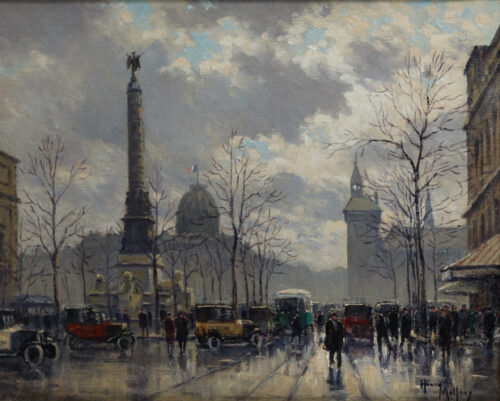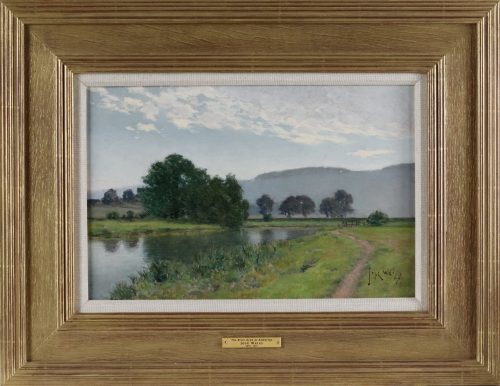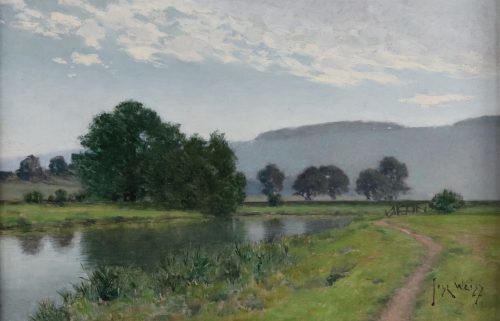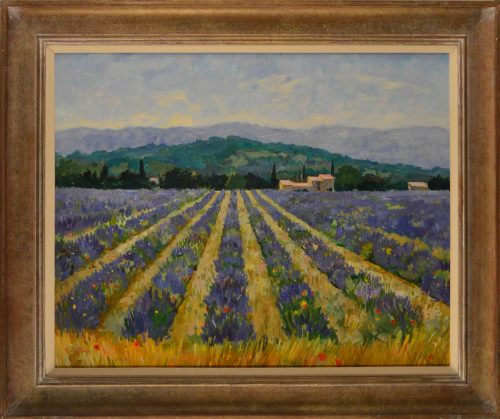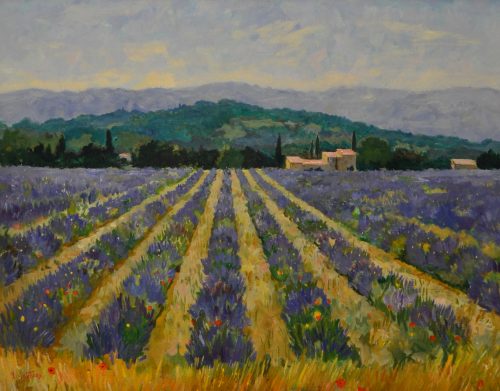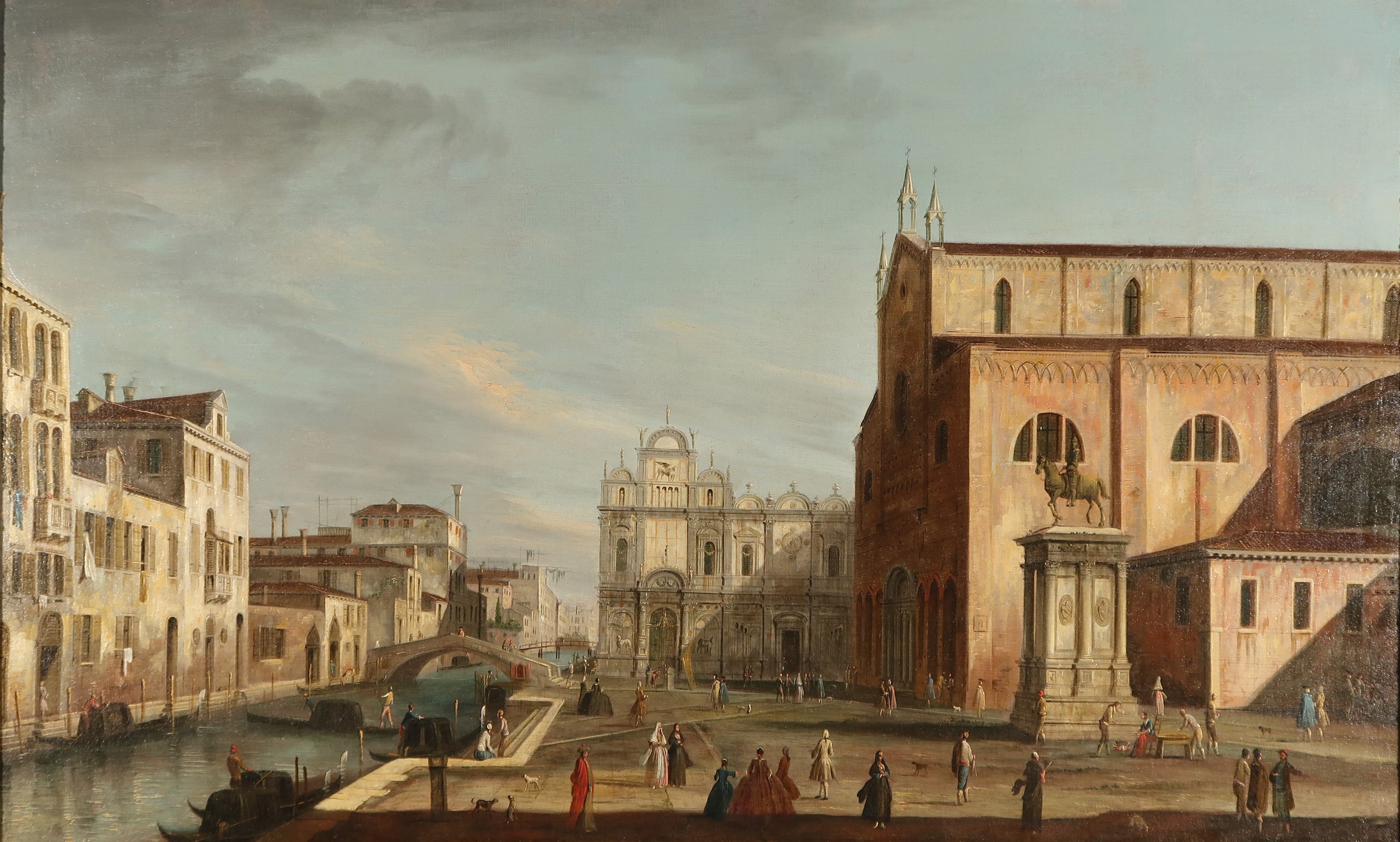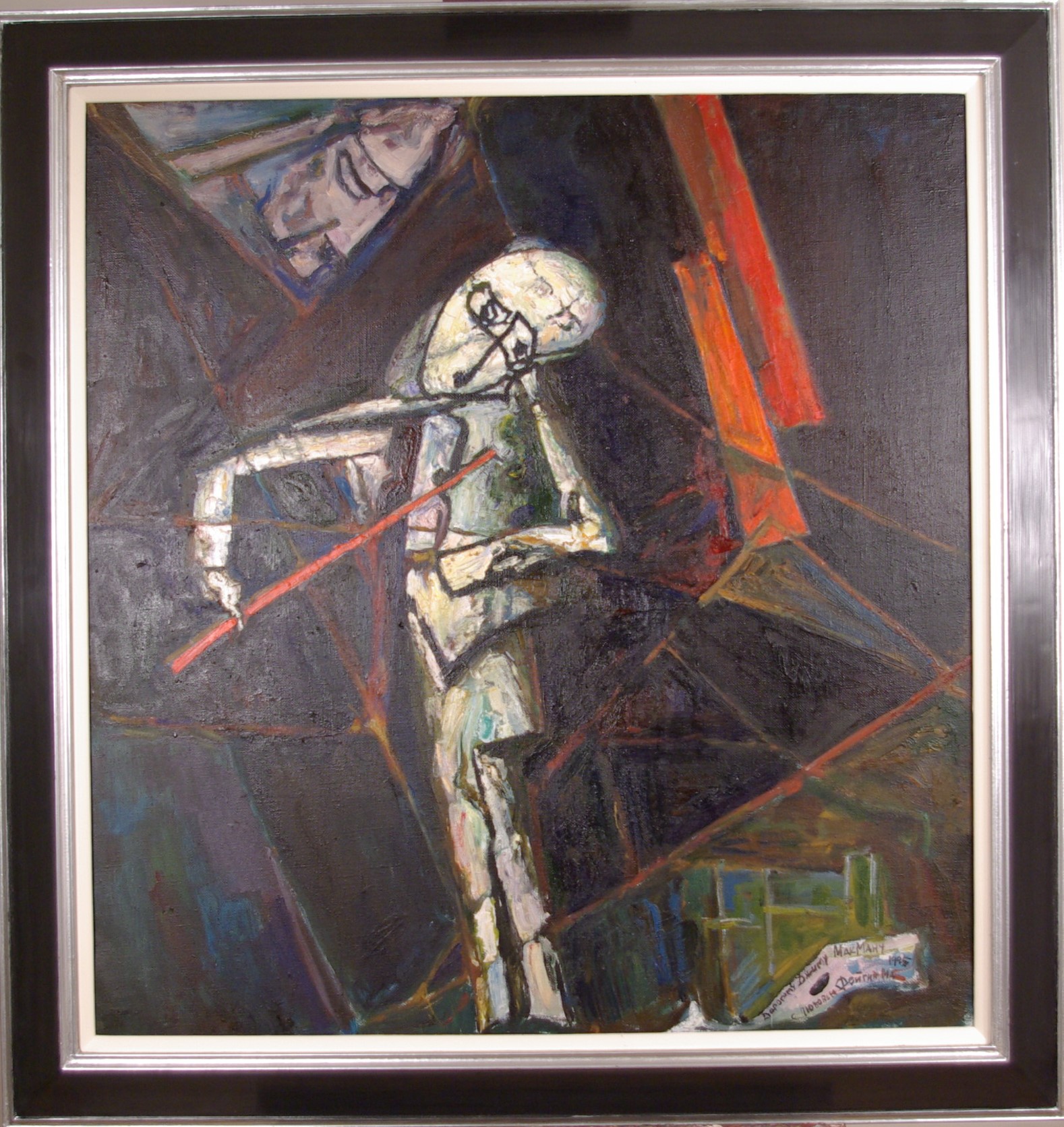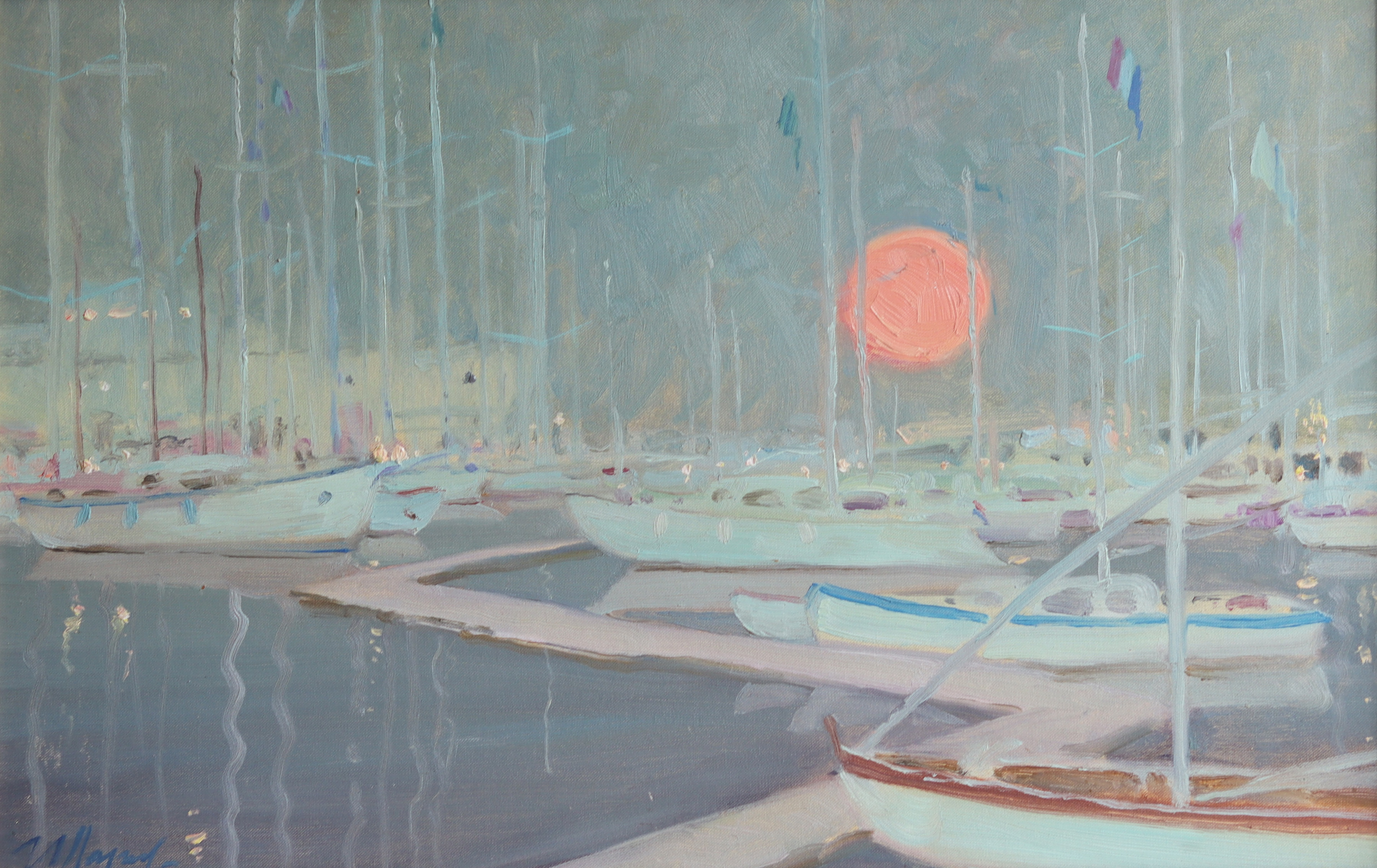An Officer of the Governor’s Bodyguard,Madras ~ Robert Home
£0.00
Out of stock
An Officer of the Governor’s Bodyguard,Madras ~ Robert Home
Description
| Title: | An Officer of the Governor- General’s Bodyguard of Madras |
| Artist: | Robert Home, Attributed to (1752-1834) British |
| Detail: | Oil on canvas: 58 x 45 in. frame.62 x 50 in. Circa 1790’s |
| Price: | P.O.A |
| Location: | Please refer |
Share:
- Artist Biography
Robert Home was born in England and became a very successful portrait painter in India, with practices in Madras, Calcutta and Lucknow.
He entered the Royal Academy Schools in 1769. In 1773 he departed for Rome, visiting Paris and Florence en route, and remained there until 1777. Home spent several years in Dublin and London before travelling to India in 1790. He gained permission to accompany the grand army to Bangalore during the Third Anglo-Mysore War, where he sketched captured forts, officers, and the local countryside. Homes contact with the British military proved enduring and lucrative. He sailed for Calcutta in 1795, where he established a thriving portraiture and painting practice.
The Governors Body Guard of Madras Presidency, also known as Governors Bodyguard Madras, was a former military regiment of the British Indian Army. Founded in the year 1778, it was dissolved in 1947. The British Indian army raised 3 bodyguard units for the three major Presidencies in British India, namely Madras Presidency, Bengal Presidency and Bombay Presidency. The body guard regiments were designated as Governors Body Guard. The Governors Body Guard of Madras Presidency was a part of
the Madras Army, before the Great Revolt of 1857. The army forces of Madras Presidency were amongst the 3 largest Presidency Armies in British India. The Army of the Madras (now Chennai) was raised with the aim of defending the commercial involvements of the East India Company. These units were under the administrative rule of the British East India Company until climax of the Sepoy Mutiny in 1857.
The authority of the British Presidency Armies was later transferred after the Government of India Act 1858 was authorized. The control was reassigned to the British Empire in India from the British East India Company. The Presidency Armies, namely the Bombay Army, the Bengal Army and the Madras Army, were eventually merged to form the united British Indian Army in 1903.

